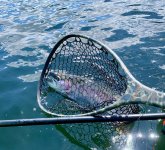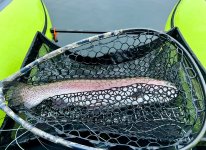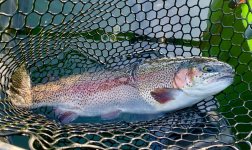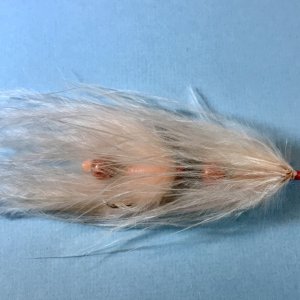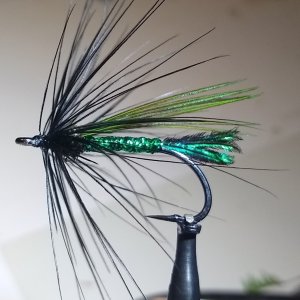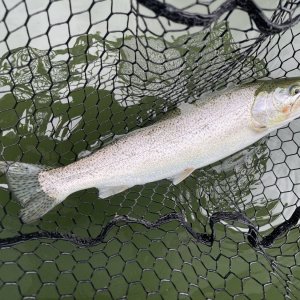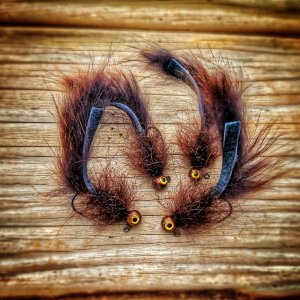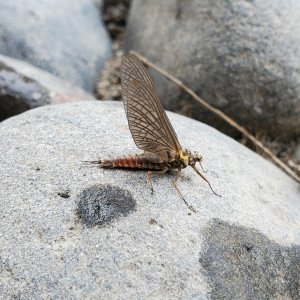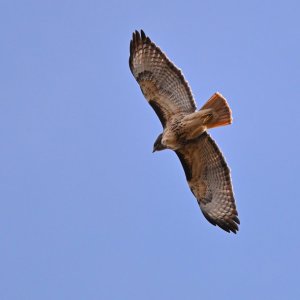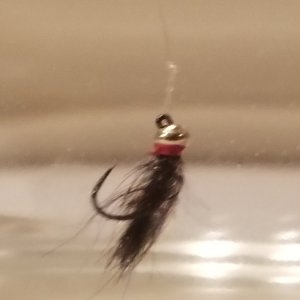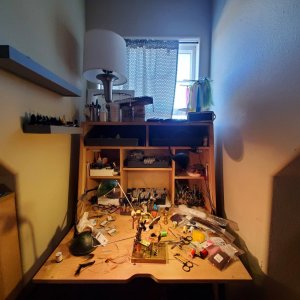On Thursday I tried a popular western WA lake that was recently planted with some large rainbows. Besides me, there were 7 other fishermen out there, so fairly crowded for such a small lake.
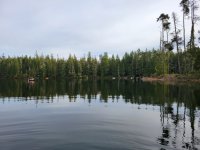
The water was a cold 43 to 44 degrees, but fortunately there wasn't much wind. But, after a couple of hours my feet were like ice cubes.
Fishing seemed to be tough for everyone, but Tom and Howard (in the white prams in the photo above) reported each hooking one of the big rainbows early in the day. I didn't hook a thing in the first 4 hours I fished, but around sunset the fish started to get active. I saw one fish rise within casting distance, so I peppered that area with several casts and finally hooked one of those big rainbows (a 19 incher), and although it had good girth, it was in it's spawning coloration and wasn't very pretty:
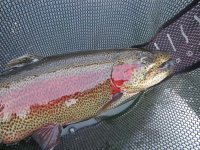
Soon thereafter I had another solid hit, and about an hour later, near dark, I hooked another 19 incher, which looked the same as the one above. I wonder if the lake was planted with old broodstock rainbows?
Rex

The water was a cold 43 to 44 degrees, but fortunately there wasn't much wind. But, after a couple of hours my feet were like ice cubes.
Fishing seemed to be tough for everyone, but Tom and Howard (in the white prams in the photo above) reported each hooking one of the big rainbows early in the day. I didn't hook a thing in the first 4 hours I fished, but around sunset the fish started to get active. I saw one fish rise within casting distance, so I peppered that area with several casts and finally hooked one of those big rainbows (a 19 incher), and although it had good girth, it was in it's spawning coloration and wasn't very pretty:

Soon thereafter I had another solid hit, and about an hour later, near dark, I hooked another 19 incher, which looked the same as the one above. I wonder if the lake was planted with old broodstock rainbows?
Rex

